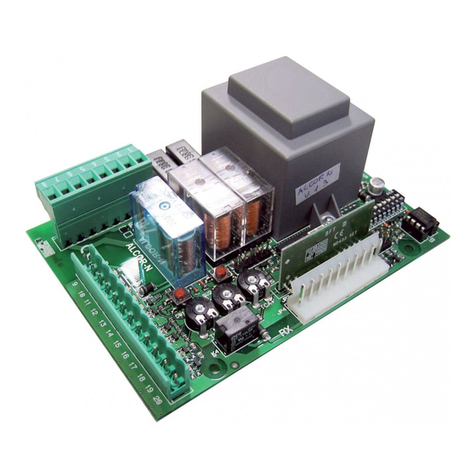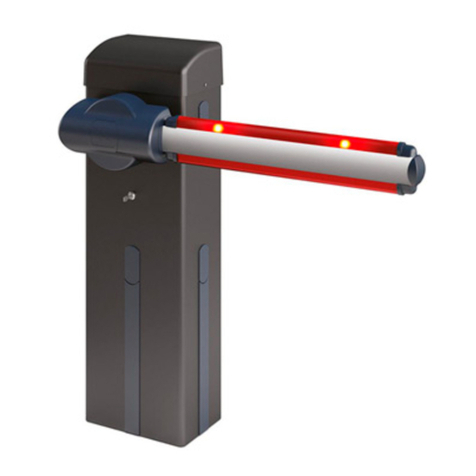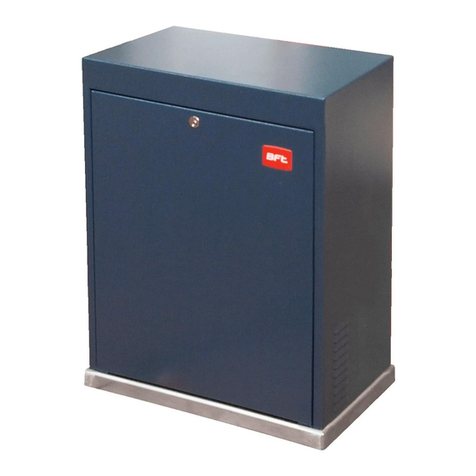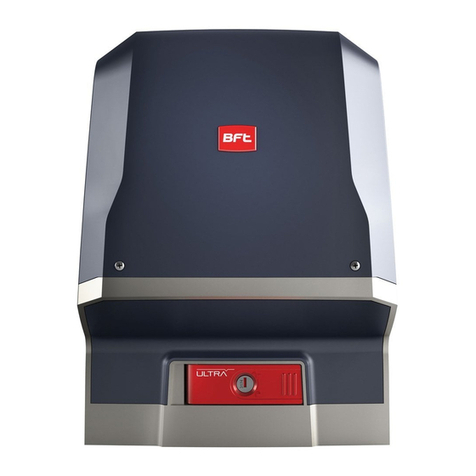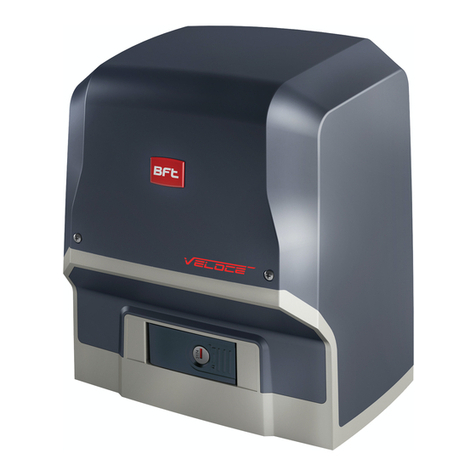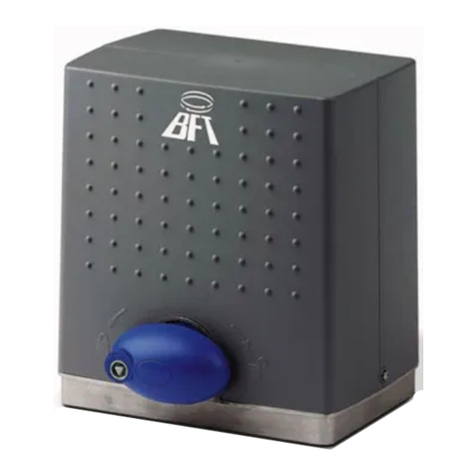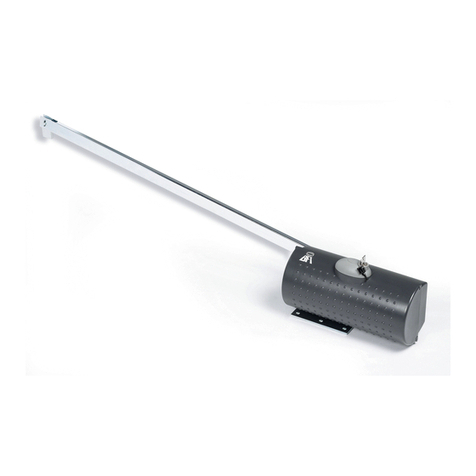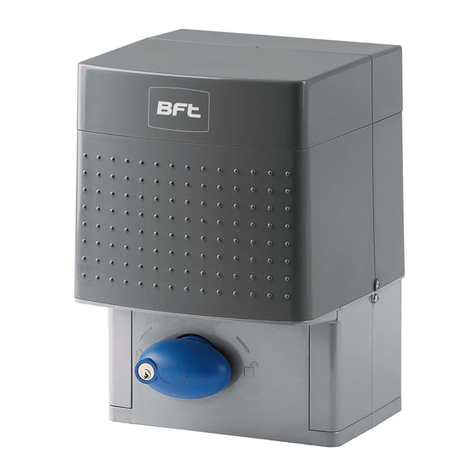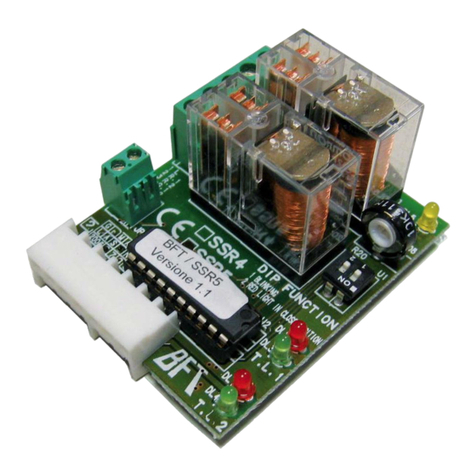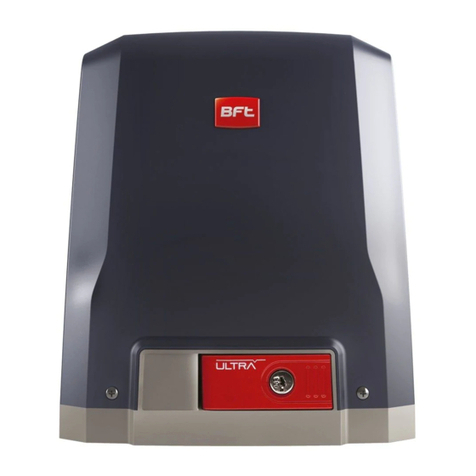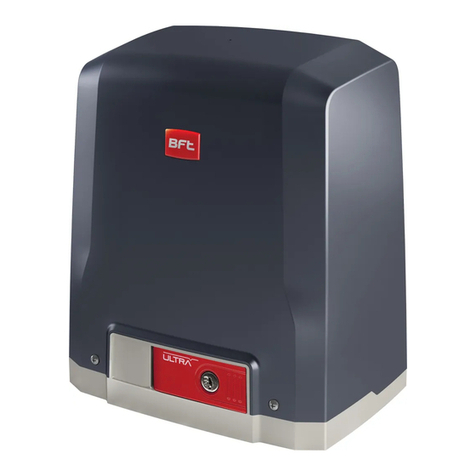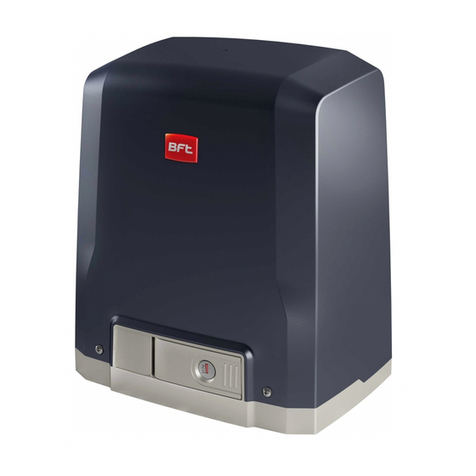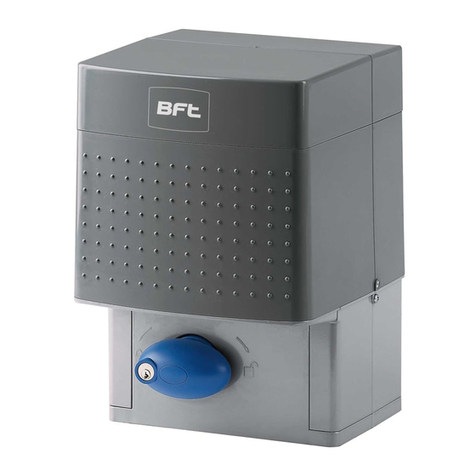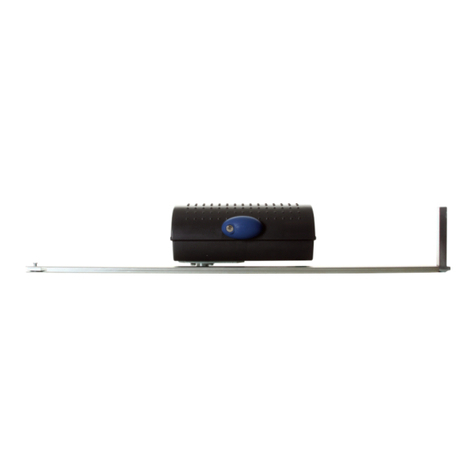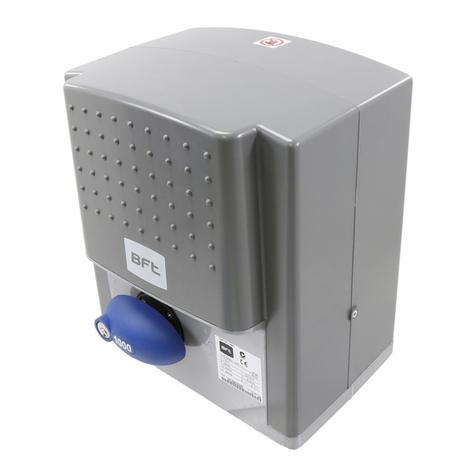
10 -
HIDE SL SMART BT A150-A300
D813983 0AA65_01
ATTENTION ! Instructions de sécurité importantes. Veuillez lire et suivre
attentivement tous les avertissements et toutes les instructions fournis
avec le produit sachant qu’une installation incorrecte peut provoquer des
préjudices aux personnes, aux animaux ou aux biens. Les avertissements
fournissentdesindicationsimportantesconcernantlasécurité,l’installation,
l’utilisationetl’entretien.Veuillezconserverlesinstructionspourlesjoindre
au dossier technique et pour d’ultérieures consultations.
SECURITE GÉNÉRALE
Ce produit a été conçu et réalisé exclusivement pour l’usage indiqué dans cette
documentation. Tout usage autre que celui indiqué risque d’endommager le
produit et d’être une source de danger.
-Les éléments qui composent l’appareil et le montage doivent être conformes
aux Directives Européennes suivantes: 2014/30/UE, 2014/35/UE, 2006/42/UE,
2011/305/UE, 2014/53/UE et leurs modications successives. Pour les pays
n’appartenant pas à la UE, il est conseillé de respecter également les normes ci-
tées, outre les règlements nationaux en vigueur, an de garantir un bon niveau
de sécurité.
-Le Fabricant de ce produit (par la suite « le Fabricant ») décline toute respon-
sabilité dérivant d’un usage incorrect ou diérent de celui prévu et indiqué
dans la présente documentation, de l’inobservation de la bonne technique de
construction des huisseries (portes, portails, etc.) et des déformations pouvant
apparaître à l’usage.
-Le montage doit être accompli par du personnel qualié (monteur profession-
nel, conformément à EN12635), dans le respect de la bonne technique et des
normes en vigueur.
-Avant d’installer le produit apportez toutes les modications structurelles
nécessaires pour réaliser les butées de sécurité et la protection ou ségréga-
tion de toutes les zones présentant un risque d’écrasement, de cisaillement,
d’entraînement ou autre, conformément aux normes EN 12604 et 12453 ou les
éventuelles normes locales sur l’installation. - Vériez si la structure existante
est susamment robuste et stable.
-Avant de commencer le montage, vérier l’intégrité du produit.
-Le fabricant décline toute responsabilité en cas d’inobservation de la bonne
technique de construction et d’entretien des huisseries motorisées, ainsi que
de déformations survenant en cours d’utilisation.
-Vérier si l’intervalle de température déclaré est compatible avec le lieu destiné
à l’installation de l’automatisation.
-Ne pas installer ce produit dans une atmosphère explosive: la présence de gaz
ou de fumées inammables constitue un grave danger pour la sécurité.
-Mettre hors tensions l’installation avant d’accomplir une quelconque interven-
tion. Déconnecter également les batteries tampon éventuellement présentes.
-Avant de mettre hors tension, vérier si les données de la plaque d’identica-
tion correspondent à celles du secteur et s’il y a en amont de l’installation élec-
trique un disjoncteur et une protection adéquats contre la surintensité. Pré-
voyez sur le réseau d’alimentation de l’automatisation un interrupteur ou un
magnétothermique omnipolaire permettant de procéder à une déconnexion
totale dans les conditions de la catégorie de surtension III.
-Vérier s’il y a en amont du réseau d’alimentation un disjoncteur dont le seuil
ne dépasse pas 0,03A et les prescriptions des règlements en vigueur.
-Vérier si l’installation de mise à la terre est réalisée correctement. Connecter
toutes les parties métalliques de la fermeture (portes, portails, etc..) et tous les
composants de l’installation munis de borne de terre.
-L’installation doit être équipée de dispositifs de sécurité et de commandes
conformes aux normes EN 12978 et EN12453.
-Les forces de choc peuvent être réduites à l’aide de rebords déformables.
-Si les forces de choc dépassent les valeurs prévues par les normes, appliquer
des dispositifs électrosensibles ou sensibles à la pression.
-Appliquer tous les dispositifs de sécurité (photocellules, linteaux sensibles,
etc..) nécessaires pour protéger la zone contre les risques de choc, d’écrase-
ment, d’entraînement ou de cisaillement. Tenir compte des règlements et des
directives en vigueur, des critères de bonne technique, de l’utilisation, de l’envi-
ronnement de l’installation, de la logique de fonctionnement du système et
des forces développées par l’automatisation.
-Appliquer les signaux prévus par les règlements en vigueur pour indiquer les
zones de danger (risques résiduels). Toutes les installations doivent être identi-
ées de façon visible conformément aux prescriptions de EN13241-1.
-Au terme de l’installation, appliquez une plaque d’identication de la porte/du
portail.
-Ce produit ne peut pas être installé sur des vantaux munis de portes (à moins
que le moteur ne puisse être actionné qu’avec la prote fermée).
bSi l’automatisation est installée à une hauteur inférieure à 2,5 m ou si elle est
accessible, il est indispensable de garantir un degré de protection adapté aux
parties électriques et mécaniques.
-Uniquement pour les automatisations de rideaux
1) Les parties en mouvement du moteur doivent être installées à plus de 2,5
mètres de hauteur au-dessus du sol ou de toute autre niveau servant à y accéder.
2) Le motoréducteur doit être installé dans un espace enfermé et muni de pro-
tection de façon à ce qu’il ne soit accessible qu’avec un outil.
-Installer toutes commandes xes en hauteur de façon à ce qu’elles ne repré-
sentent pas une source de danger et qu’elles soient éloignées des parties
mobiles. En particulier les commandes à homme présent doivent être visibles
directement de la partie guidée et- à moins qu’il n’y ait une clé, se trouver à 1,5 m
minimum de hauteur de façon à être inaccessibles au public.
-Appliquer au moins un dispositif de signalement lumineux (clignotant) visible,
xer également un panneau Attention sur la structure.
-Fixer, à proximité de l’organe de manœuvre et de façon permanente, une éti-
quette sur le fonctionnement du déverrouillage manuel de l’automatisation.
-S’assurer que soient évités pendant la manœuvre les risques mécaniques et, en
particulier, l’écrasement, l’entraînement et le cisaillement par la partie guidée
et les parties voisines.
-
Une fois l’installation accomplie, s’assurer que le réglage du moteur est correct et
que les systèmes de protection et de déverrouillage fonctionnement correctement.
-Utiliser exclusivement des pièces détachées originales pour les opérations
d’entretien ou les réparations. Le Fabricant décline toute responsabilité quant
à la sécurité et au bon fonctionnement de l’automatisation en cas d’utilisation
de composants d’autres Fabricants.
-Ne modier d’aucune façon les composants de l’automatisation sans l’autorisa-
tion expresse du Fabricant.
-Informer l’utilisateur de l’installation sur les risques résiduels éventuels, sur les
systèmes de commande appliqués et sur la façon de procéder à l’ouverture
manuelle en cas d’urgence: remettre le manuel d’utilisation à l’utilisateur nal.
-Eliminer les matériaux d’emballage (plastique, carton, polystyrène, etc.) confor-
Tout ce qui n’est pas expressément prévu dans le manuel de montage
est interdit. Le bon fonctionnement de l’appareil n’est garanti que si
lesdonnéesindiquées sont respectées.LeFabricantne répondpasdes
dommages provoqués par l’inobservation des indications données
dans ce manuel.
En laissant inaltérées les caractéristiques essentielles de l’appareil,
l’entreprise se réserve le droit d’apporter à tout moment les modi-
cations qu’elle jugera opportunes pour améliorer le produit du point
de vue technique, commercial et de sa construction, sans s’engager à
mettre à jour la présente publication.
AVERTISSEMENTS POUR LE MONTEUR
mément aux normes en vigueur. Ne pas laisser les sachets en plastique et la
mousse de polystyrène à la portée des enfants.
CONNEXIONS
ATTENTION ! Pour le branchement sur le secteur, utiliser un câble multipolaire
ayant une section minimum de 5x1,5mm2ou de 4x1,5mm2pour alimentation tri-
phasée ou de 3x1,5mm2pour alimentation monophasée (par exemple, le câble
peut être du type H05RN-F avec une section de 4x1,5mm2). Pour le branchement
des auxiliaires, utiliser des conducteurs de 0,5 mm2de section minimum.
-Utiliser exclusivement des touches ayant une portée supérieure ou égale à
10A-250V.
-Immobiliser les conducteurs à l’aide d’une xation supplémentaire à proximité
des bornes (par exemple, à l’aide d’un collier) an de séparer nettement les
parties sous tension des parties sous très faible tension de sécurité.
-
Pendant l’installation, dénuder le câble d’alimentation an de pouvoir bran-
cher le conducteur de terre sur la borne appropriée en laissant cependant les
conducteurs actifs aussi courts que possibles. Le conducteur de terre doit être
le dernier à se tendre en cas de desserrement du dispositif de xation du câble.
ATTENTION ! Les conducteurs à très faible tension de sécurité doivent être phy-
siquement séparés des conducteurs à basse tension.
Seul le personnel qualié (monteur professionnel) doit pouvoir accéder aux par-
ties sous tension.
VÉRIFICATION DE L’AUTOMATISATION ET ENTRETIEN
Vérier scrupuleusement ce qui suit avant de rendre l’automatisation dénitive-
ment opérationnelle et pendant les interventions d’entretien:
-Vérier si tous les composants sont solidement xés.
-Vérier le fonctionnement du démarrage et de l’arrêt en cas de commande
manuelle.
-Vérier la logique de fonctionnement normale ou personnalisée.
-Uniquement sur les portails coulissants: vérier si l’engrenage crémaillère - pi-
gnon est correct, avec un jeu de 2 mm le long de toute la crémaillère; le rail de
glissement doit être toujours propre et dépourvu de débris.
-Uniquement sur les portails coulissants: vérier si le rail du portail est droit et
horizontal et si les roues sont en mesure de supporter le poids du portail.
-Uniquement sur les portails coulissants suspendus en porte-à-faux: vérier
l’absence d’abaissement ou d’oscillation pendant la manœuvre.
-Uniquement sur les portails à battant : vérier si l’axe de rotation des vantaux
est parfaitement vertical.
-Uniquement pour les barrières: avant d’ouvrir le portillon le ressort doit être
déchargé (barre verticale).
-
Contrôler le bon fonctionnement de tous les dispositifs de sécurité (photocel-
lules, linteaux sensibles etc..) et le bon réglage du dispositif de sécurité anti-écra-
sement, en vériant si la valeur de la force de choc mesurée aux endroits prévus
par la norme EN12445 est inférieure à celle indiquée par la norme EN12453.
-Les forces de choc peuvent être réduites à l’aide de rebords déformables.
-Vérier le bon fonctionnement de la manœuvre d’urgence s’il y en a une.
-Vérier le bon fonctionnement à l’ouverture et à la fermeture avec les disposi-
tifs de commande appliqués.
-Vérier l’intégrité des connexions électriques et des câblages, en particulier
l’état des gaines isolantes et des presse-câbles.
-Pendant les opérations d’entretien, nettoyer les lentilles des photocellules.
-Pendant la période de mise hors service de l’automatisation, activer le déver-
rouillage d’urgence (cf. paragraphe MANŒUVRE D’URGENCE) de façon à libérer
la partie guidée et à pouvoir accomplir l’ouverture et la fermeture manuelles
due portail.
-Silecâbled’alimentationestendommagé,ildoitêtreremplacéparleconstructeur
ou par son service après-vente ou par une personne qualiée, an d’éviter tout
risque.
-Si on installe des dispositifs du type D (tels que dénis par la EN12453), branchés
enmode nonvérié,prescrireunentretienobligatoireau moinstous lessix mois.
-L’entretien décrit plus haut doit être répété au moins une fois par an ou plus
fréquemment si les caractéristiques du site ou de l’installation le demandent.
ATTENTION !
Ne pas oublier que la motorisation facilite l’utilisation du portail/de la porte
mais qu’elle ne résout pas les problèmes imputables à des défauts ou à des
erreurs de montage ou encore à l’absence d’entretien.
DÉMOLITION
Eliminez les matériaux en respectant les normes en vigueur. Ne jetez
ni les vieux appareils, ni les piles, ni les batteries usées avec les ordures
domestiques.Vous devez coner tous vos déchets d’appareils électri-
ques ou électroniques à un centre de collecte diérenciée, préposé à
leur recyclage.
DÉMANTÈLEMENT
Si l’automatisation est démontée pour ensuite être remontée sur un autre site, il faut:
- Couper l’alimentation et débrancher toute l’installation électrique.
- Retirer l’actionneur de la base de xation.
- Démonter tous les composants de l’installation.
- Remplacer les composants ne pouvant pas être retirés ou endommagés.
LES DÉCLARATIONS DE CONFORMITÉ PEUVENT ÊTRE CONSULTÉES SUR LE
SITE INTERNET http://www.bft-automation.com/CE
LES INSTRUCTIONS DE MONTAGE ET D’UTILISATION PEUVENT ÊTRE CON-
SULTÉES DANS LA SECTION DOWNLOAD/TÉLÉDÉCHARGEMENT.
D811766_18

